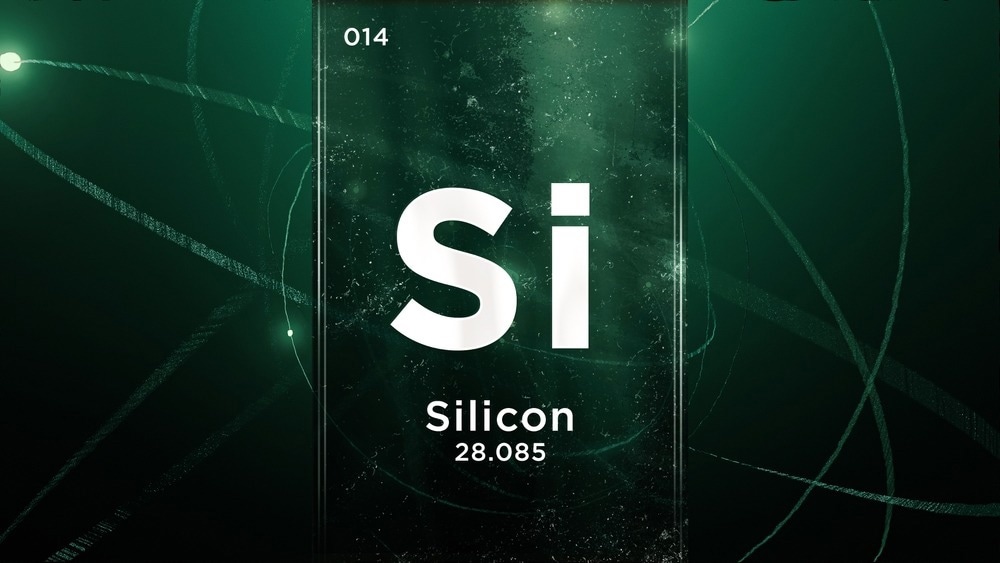Despite the extensive applications of silicon (Si)-based materials in micro- and nanoscale devices, their nanofriction behavior is still concerning and has impacted a few applications.

Study: Nanotribology of Hydrogenated Amorphous Silicon: Sliding-Dependent Friction and Implications for Nanoelectromechanical Systems. Image Credit: Mahir KART/Shutterstock.com
Previous simulations of hydrogenated Si surfaces revealed their sliding-dependent friction mechanism, where the friction forces increased with sliding. However, this mechanism lacked experimental evaluation and validation of this behavior in an ambient atmosphere relevant to the current application.
An article published in ACS Applied Nano Materials experimentally presented the nanotribology of hydrogenated amorphous Si (a-Si:H) through repetitive scanning using atomic force microscopy (AFM). Overall, sliding caused an increase in friction and prevented wear.
The friction force was recovered to an intermediate value after separation and fresh contact and later increased until it reached an intermediate stable state. The mechanism was based on the repeated formation and destruction of bonds at the interface.
Furthermore, investigating the relationship between the nanofriction behavior and the photoactivity of the material revealed that under an external light source during scanning, the results could be altered only before the interface's stabilization. By resolving the present problems and recommending novel devices based on anomalous behavior, this experimental investigation could support wider nanoscience applications of Si material.
Nanotribology of Si-Based Materials
Nanotribology or molecular tribology is one of the most significant components of tribology which is concerned with atomic and molecular interactions at the nanoscale that occur upon the frictional contact of materials or lubrication.
The ability to study friction and wear processes at the nano-/molecular level has expanded due to AFM and other surface research techniques. With more computing power, it is now feasible to study atomic-scale contact processes and conduct molecular dynamics simulations of sliding surfaces to study friction.
These developments gave rise to research that intended to create a basic knowledge of the nature and effects of interactions between materials on an atomic scale and to direct efforts in practical applications.
Consequently, the active control or tuning of such a widespread phenomenon is crucial for developing novel and formerly restricted applications, paving the way for developing nanotribology and nanomechanics.
Micro- and nanoelectromechanical systems (MEMS and NEMS, respectively) are crucial in many technical domains, and their large-scale applications are affected by their tribological characteristics. Due to their dimensions (surface-to-volume ratio), their surface features are more significant than their bulk qualities for performance.
Si materials are widely employed in MEMS and NEMS because of their adaptability and the techniques available for micro- and nanopatterning.
Nanotribology of a-Si:H
Previously, the light-induced photoconductivity variation of microcrystalline hydrogenated Si (μc-Si: H) and a-Si:H has been investigated using conductive AFM. The results revealed that the uniformly scattered light from the laser of the equipment was sufficient to affect photoconductivity, the effect of which was severe in μc-Si:H.
The present study focused on three main goals of a-Si:H thin films. First, a nanotribological study of the a-Si:H thin films was conducted without any wear or plastic changes. Second, the sliding-dependent friction behavior was experimentally validated, as previously suggested by theoretical simulations.
The estimated friction increased during repeated sliding until a steady state was achieved. When the contact ceased and was re-established, the frictional forces restarted at an inferior level but stabilized at an intermediate value. This phenomenon was anticipated to have a direct influence on NEM-technology-based applications. Moreover, the formation of Si-Si bonds at contact during sliding is one possible explanation for such phenomena.
Furthermore, on separating the surfaces, the dangling bonds were passivated by the environment or internal rearrangement in both the sample and tip. Third, because the band gap of the sample matched the ubiquitous laser scattering of AFM, the photo effect interfered. Additionally, an external source at different time points verified these additional effects.
Following the dark scans, no additional changes were observed with the incident light after realizing steady-state behavior. However, if the system is still developing, the external light results in larger friction force ratios than those that were consistently recorded in the dark and revealed a critical point in the transition from dark to light and vice versa.
The researchers offer new avenues for better understanding and controlling the frictional characteristics of these systems, as well as for investigating the important theoretical implications of the phenomenon in both conventional and novel applications.
Conclusion
In summary, the goal of investigating the intriguing nanotribology of a-Si:H films was achieved, which could support future experimental and theoretical investigations. Complete knowledge of the characteristics of such a system may boost the material's broader nanoapplication, address present issues (difficulty in MEMs and NEMs industrial applications), and suggest new devices that explore odd features.
Reference
Leidens, L. M. et al. (2022). Nanotribology of Hydrogenated Amorphous Silicon: Sliding-Dependent Friction and Implications for Nanoelectromechanical Systems. ACS Applied Nano Materials. https://pubs.acs.org/doi/10.1021/acsanm.2c03603
Disclaimer: The views expressed here are those of the author expressed in their private capacity and do not necessarily represent the views of AZoM.com Limited T/A AZoNetwork the owner and operator of this website. This disclaimer forms part of the Terms and conditions of use of this website.